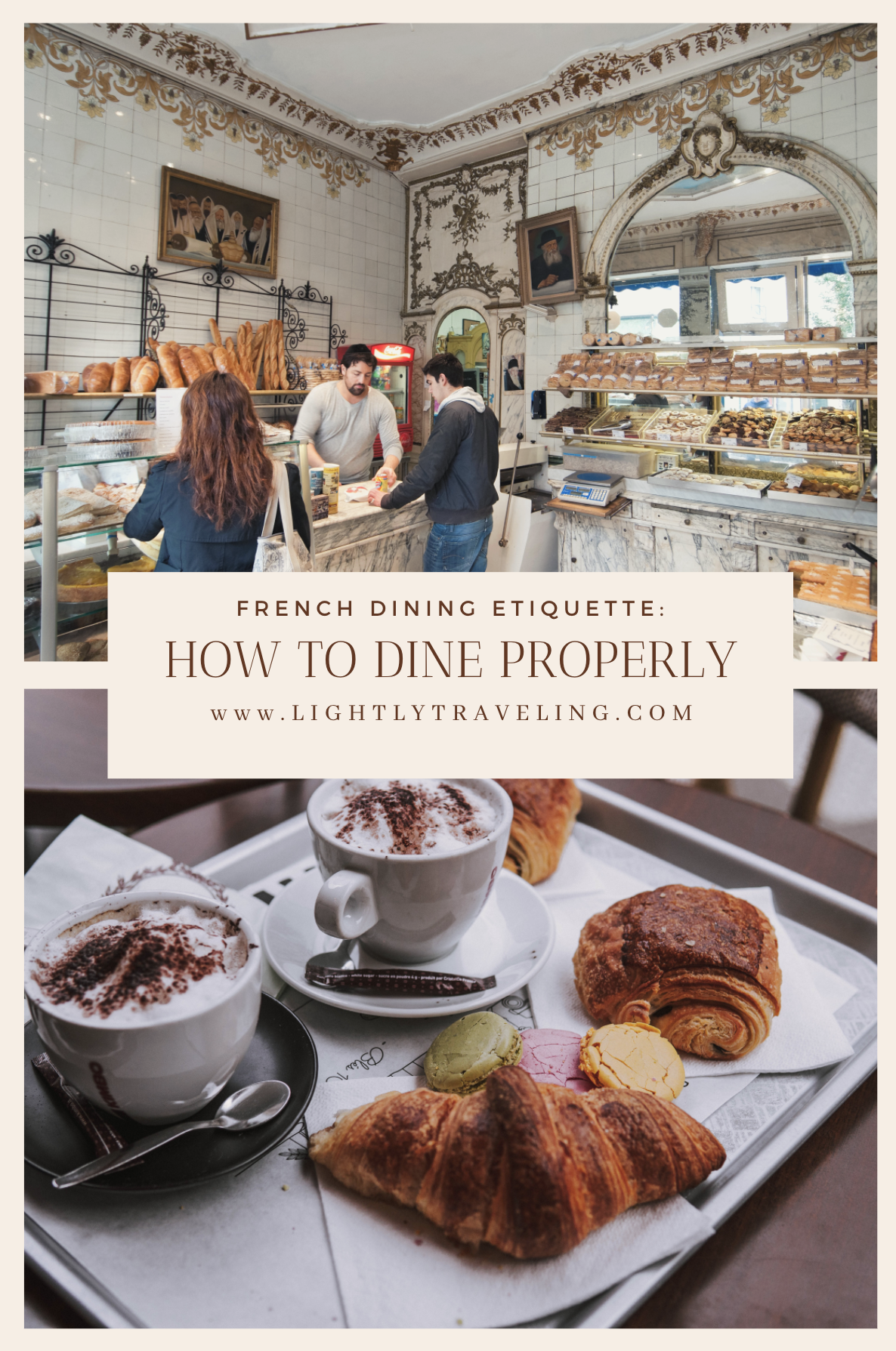FRENCH RESTAURANT ETIQUETTE: HOW TO DINE LIKE THE FRENCH
Before traveling to France I thought I had read up on all the dining etiquette there was to know, while arriving I came to find out there was a few things that I had missed. Theres a lot of etiquette information online when it comes to dining in France, this post is focusing on the not so common information. Although some of these are common sense, a quick refresher never hurt nobody, so with that being said let’s get start!
Le Saint Jean - 23 Rue des Abbesses, 75018 Paris, France
KNOW THE DINING HOURS
In the United States you can go to most restaurants and order what ever you’re in the mood for whether you’re craving a hot plate of pancakes for dinner or a savory sandwich for breakfast but in France you’ll come to learn they have specific mealtimes.
If you are looking at dining in a restaurant for lunch, plan to do so between the hours of 12pm and 2:00 pm, if you arrive after 2:00pm you might be turned away. This is more so for sit-down restaurants, their kitchen will be closed and you’ll have to come back during their dinner hours of 7:30pm to 11 p.m.
In between the hours of 2:00pm and 7:30pm I suggest going to a cafe to enjoy a beverage and or perhaps grabbing a snack such as pastries, baguettes, or fruit in the meantime.
KNOW THE TYPES OF FRENCH DINING ESTABLISHMENTS
Restaurants - When it comes to dining it’s the top tier of dining establishments, it’s usually more expensive and formal. Dinner hours consist of 7:30pm to 11 p.m.
Brasserie - A brasserie is a combination of a bar with a restaurant, usually they are constantly open. This is the perfect place to go for some beer and appetizers. The word brasserie is also French for "brewery" so here you’ll find small single dishes such as oysters, soup, and sandwiches.
Bistro/Bistrot - A bistro is a small, informal, neighborhood restaurant with simple food, usually with a single owner. They are open at set times, approximately from 12PM to 2 or 2:30PM for lunch and 7:30PM to 10:30 or 11PM for dinner and most of the time closed either Sunday or Monday.
Café - This is probably the most common eating establishment, it mainly serves beverages including coffee, tea, wine, and cocktails. Cafe's are open all day and night serving breakfast, lunch, and dinner and the same menu is served throughout the day. Most cafes have outdoor terraces which open all year round with heat lamps in winter.
French restaurants are very similar to American restaurants in a few ways, you’ll see their menu posted on the window or there will be a menu on a stand before entering the restaurant.
This will give you the chance to briefly look through the menu if you have any dietary restrictions or if you happen to be on a budget it’ll give you a chance to browse through the prices.
PRICE DIFFERENCE DEPENDING ON WHERE YOU SIT
There is a price difference when it comes to sidewalk cafes. A lot of places show the different prices for bar, table and terrace. For example, a basic espresso which costs 1€ at the bar can cost about 2.50€ at a table outside. It’s not a huge difference but for some sunshine and fresh air on a beautiful day it just might be worth it! Also, if you buy or pay for a drink at the bar while waiting for a table outside to open up, then go sit down outside, the staff will notice and they may give you an extra check.
THINGS TO KNOW ONCE YOU SIT
When it comes to dining out, you’ll notice that tables are pushed fairly close together. I personally prefer to sit further apart but this didn’t prevent me from having an equally enjoyable dinner. Before traveling to France I did quite a bit of research and I have to just mention,
If you find seating in a sidewalk cafe, just seat yourself and a waiter will come take your order or tell you otherwise. Of course, if there is a reserved sign on the table it’s best not to sit there or you will immediately be asked to move.
When sitting yourself, if you happen to have a larger group dining together it’s rude to move chairs around it’s just best to ask your server or waiter to assist you in getting a table big enough to hold your group. I know it might seem like common sense but thought I’d add it to this list just as a reminder.
WHAT TO EXPECT WHEN YOU SIT DOWN
When you are seated it’s normal to not receive a basket of bread right as you sit down, instead you’ll receive a basket of bread once your meal is served. Also, you won’t get a dish of butter to accompanying that bread basket as you would in the United States. The bread you receive, if any, is to help you enjoy your meal by pushing the food onto your fork.
Expect portions to be a lot smaller in France than they are in the United States, which is why sharing dishes is looked down upon sure you might want to split a dish to save a few dollars here and there but you really shouldn’t, most restaurants won’t allow it.
In the United States it might be a common thing to get free refills on soda, coffee, or juice but that’s just not the case in France. Although you can get free refills on tap water.
HOW AND WHEN TO TIP
There isn’t a set way of tipping but I suggest tipping between €1 and €5 at casual eateries such as cafes, bistros and sit down bakeries. At fancier restaurants, a 5 to 10 percent tip is appreciated although make sure to look for a service charge on your bill since most restaurants do automatically place a 15 percent service charge. But it’s up to you if you want to leave a tip after that, generally 5 and 10 percent is considered a generous amount or a euro or two per person dining.
If dining at more formal restaurants, tip restroom attendants and coat-check personnel up to €1. If you’re having drinks at the bar tipping bartenders €1 per round is standard.
Now that you’ve learned all about the dining etiquette go find the most delicious restaurants in France and put your skills to the test! Bon appétit!







